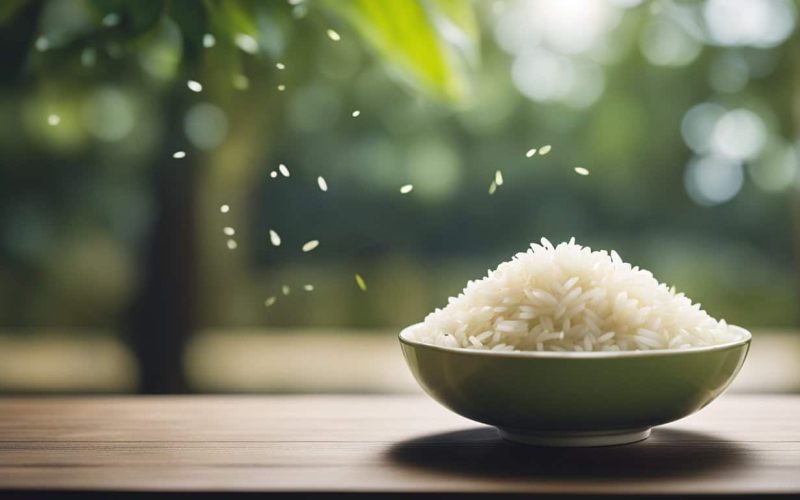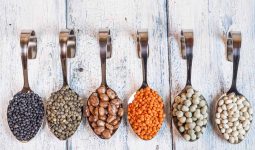When it comes to understanding diet and nutrition, one of the first concepts you’ll likely encounter is the calorie.
But what are calories, and why are they so important?
Why Calories Matter
Calories are the energy that fuels your body, allowing you to perform everything from basic bodily functions to intense physical activity.
Every bite of food you eat contains calories, and your body uses these calories as energy.
However, if you consume more calories than your body needs, the excess will be stored as fat.
This is why balancing the calories you consume from foods and beverages with the calories you burn through physical activity is crucial for maintaining a healthy weight.
If you’re interested in learning more about this balance, check out our article on what is calorie counting.
How Calories are Measured
Calories in food are measured using a unit called a kilocalorie, often shortened to “calorie” in everyday language.
One kilocalorie represents the amount of energy required to raise the temperature of one kilogram of water by one degree Celsius.
To determine the caloric content of a food, scientists burn the food in a device called a bomb calorimeter.
This device measures the heat produced when the food is burned, which corresponds to its energy content.
So when you’re wondering, “how many calories in half a cup of rice?” these are the units and methods behind that calculation.
This understanding can be helpful when you’re trying to balance your diet or make healthier food choices.
In the next section, we’ll dive deeper into the specific caloric content of rice and how it fits into a balanced diet.
The Role of Rice in Your Diet
Rice, a versatile and widely consumed grain, plays a significant role in many diets around the world. From a nutritional standpoint, it has a lot to offer.
But, as with all foods, its caloric content is something you need to consider, especially when you’re keeping track of your daily calorie intake.
The Nutritional Value of Rice
Rice, particularly whole-grain varieties, is packed with essential nutrients.
It’s a good source of carbohydrates, providing you with the energy you need for your daily activities.
It also contains some protein, fiber, and a range of B vitamins, which play key roles in your metabolism, brain function, and overall health.
| Nutrient | Amount per Half Cup of Cooked Brown Rice |
|---|---|
| Calories | 108 |
| Carbohydrates | 22.4g |
| Protein | 2.3g |
| Fiber | 1.8g |
| Thiamin (Vitamin B1) | 0.1mg |
| Niacin (Vitamin B3) | 1.3mg |
| Vitamin B6 | 0.1mg |
Remember, these nutritional values can vary depending on the type of rice and the cooking method.
For instance, white rice has less fiber than its brown counterpart due to the removal of the bran layer during processing.
Rice as a Staple Food in Various Diets
The beauty of rice lies in its versatility. It’s a staple in many diets worldwide, from the sushi rolls of Japan to the jambalaya of the Southern United States.
Its neutral flavor makes it an excellent accompaniment to a wide variety of dishes.
However, as we’re focusing on calorie counting, it’s worth noting that the way rice is prepared and what it’s served with can significantly affect its caloric content.
For example, a simple half cup of steamed white rice has around 100 calories, but that number can rise if you’re using it as a base for a stir-fry with oil or if you’re cooking it as a risotto with cream and cheese.
For a detailed look into the caloric content of various rice preparations, you might want to check out our articles on how many calories in fried rice and how many calories in yellow rice.
Remember, balance and moderation are key. Rice can absolutely be part of a calorie-controlled diet, but like all foods, it’s best to consume it as part of a varied, balanced diet that includes plenty of fruits, vegetables, lean protein, and healthy fats.
If you’re curious about the calorie content of other foods, be sure to explore our other articles, such as how many calories in two scrambled eggs and how many calories in a slice of cheese.
Decoding the Caloric Content of Rice
It’s not uncommon to find rice as a staple in meals. But when you’re counting calories, you may be wondering, how many calories are in half a cup of rice?
Let’s break it down.
How Many Calories in Half a Cup of Rice?
The exact caloric content of half a cup of rice can vary depending on the type of rice.
However, as a general guide:
| Type of Rice | Calories in 1/2 Cup (Cooked) |
|---|---|
| White Rice | Approximately 100 calories |
| Brown Rice | Approximately 108 calories |
| Black Rice | Approximately 160 calories |
| Red Rice | Approximately 102 calories |
This table can be a helpful tool in your calorie counting plan.
How Cooking Methods Impact Caloric Value
It’s also important to consider that the way you prepare and cook your rice can significantly impact its caloric content.
For example, adding butter, oil, or other high-calorie ingredients to your rice will naturally increase the total calories.
On the other hand, cooking rice in a method like boiling, without adding any extra calories from fats or oils, will keep the calorie count as low as possible.
Also, note that the caloric value can increase if you’re eating fried rice, as the rice is typically cooked with oil and other ingredients.
Check out our article on how many calories in fried rice for more details.
So, the next time you enjoy a half cup of rice with your meal, you’ll have a better idea of how it fits into your daily caloric intake.
And remember, it’s not just about the calories – rice also provides important nutrients like vitamins and minerals. As with everything, enjoy it as part of a balanced diet.
Rice and Your Daily Caloric Intake
When you’re keeping a close eye on your calorie intake, knowing how many calories in half a cup of rice can be really handy.
Rice can be seamlessly integrated into a calorie counting plan, provided you know how to balance it with other foods in your diet.
Integrating Rice into a Calorie Counting Plan
Rice, particularly brown rice or whole grain varieties, can be a good source of nutrients and a filling part of your diet.
If you’re following a calorie counting plan, integrating rice into your meals can be quite simple.
For example, if half a cup of cooked white rice contains approximately 100 calories, you can easily factor this into your daily calorie allowance.
If you’re aiming for a 2000 calorie diet, for instance, a serving of rice would constitute 5% of your total daily calories.
Remember, it’s not just about the calories. Pair your rice with lean proteins, like chicken or fish, and plenty of vegetables to ensure a balanced meal.
You can get an idea of the calorie content of various foods from our other articles, such as how many calories in grilled chicken or how many calories in two scrambled eggs.
Tips for Ensuring Balanced Caloric Intake
While counting calories is important, it’s equally crucial to ensure a balanced nutrient intake.
Here are a few tips:
- Combine with Protein and Fiber: Complement your serving of rice with foods high in protein and fiber. This will increase the satiety factor of your meal, keeping you full for longer.
- Pay Attention to Portion Sizes: As with all foods, moderation is key. Stick to the right serving size (in this case, half a cup) to keep your calorie consumption in check.
- Choose Whole Grains: Whenever possible, opt for brown rice or other whole grain varieties. These types of rice are higher in fiber and can regulate your blood sugar levels, preventing sudden spikes and crashes.
- Avoid High-Calorie Additions: Be mindful of what you’re adding to your rice. Sauces, dressings, and certain types of seasoning can significantly increase the calorie content of your dish.
By understanding the caloric content of rice and other foods, you can make informed decisions about your diet and ensure a balanced nutrient intake.
Check out our other articles on calorie content, such as how many calories in Italian dressing or how many calories in a slice of pizza, to help you plan your meals effectively.
Other Factors to Consider
While the focus is on ‘how many calories in half a cup of rice,’ it’s also vital to take into account other factors, such as the type of rice and its nutritional aspects beyond just calories.
The Type of Rice and Its Caloric Content
The caloric content can vary depending on the type of rice you’re eating.
For instance, white rice, brown rice, and jasmine rice have different caloric values.
Here’s a quick comparison:
| Type of Rice | Calories per Half Cup (cooked) |
|---|---|
| White Rice | 103 |
| Brown Rice | 108 |
| Jasmine Rice | 100 |
For more specific details on the caloric content of different types of rice, you can check out our articles on how many calories in white rice and how many calories in jasmine rice.
Other Nutritional Aspects of Rice Beyond Calories
While it’s important to know the caloric content of rice, it’s also crucial to understand its other nutritional aspects.
Rice is a great source of energy due to its high carbohydrate content. It also contains small amounts of protein and fiber, especially brown rice.
| Nutrition | Amount per Half Cup of Cooked White Rice |
|---|---|
| Carbohydrates | 22g |
| Protein | 2g |
| Fiber | 0.3g |
Remember, it’s not just about how many calories in half a cup of rice; it’s also about the nutritional balance and the role rice plays in your overall diet.
If you’re counting calories, it would be beneficial for you to understand what is calorie counting, which can provide a better perspective on how to integrate rice into your diet in a healthy way.








